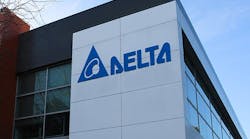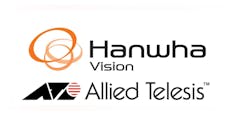A motorcyclist was killed by a hit-and-run driver on Atlantic Avenue in Brooklyn. But the driver could not run far: a wide-angle surveillance camera at a B.P. gas station recorded the collision, and a camera at a construction site captured him removing the license plates and throwing them into a trash bin. The recordings - and the license plate - led the police to the man and his white Mercury Marquis.
A woman was stealing wallets from women's locker rooms in health clubs on the Upper West Side. Then one of the stolen credit cards was used at a Filene's Basement in Manhattan. Using the transaction information and the store's surveillance video, the police matched the thief's image with another surveillance video of her stealing from a Jewish community center, created a wanted poster and soon had her under arrest.
The proliferation of private surveillance cameras around the city and the nation - and their public-sector counterparts - have spurred debates about privacy. But more quietly, in ways large and small, the cameras are doing something else: they are transforming police work, joining witnesses and fingerprints as key tools in investigations. "One of the things we do at the scene of any crime is look for cameras, private-sector cameras," said Raymond W. Kelly, the New York City police commissioner. "It was not standard procedure 10 or 15 years ago."
As the cost of digital video systems drops and as the quality of their images improves, surveillance cameras are appearing in places like health clubs, construction sites and carwashes. Spurred after 9/11 by security concerns and businesses' increasing vigilance over their customers and employees, the video surveillance industry is growing at about 15 to 20 percent a year, about double the rate before Sept. 11, according to Joe Freeman, the chief executive of JP Freeman, a security consulting company.
Cameras now play a role in recording evidence on crimes from pickpocketing to murders to bombings. Two week ago, when two handmade grenades exploded outside a Third Avenue office building, detectives immediately began a search of surrounding cameras. They came up with more than 40 video recordings from more than 20 locations, including one from directly across the street that showed the explosions. Using the video, the police have been able to identify several potential witnesses.
"It used to be you got to a crime scene and what you had was whatever was left there: a cigarette stub or a tire skid," said John Firman, director of research for the International Association for Chiefs of Police. "Now it's possible to have between 5 to 10 video clips that they can gather from that area, depending on how public that area is."
The tapes can prove more reliable than human witnesses' fuzzy recollections. The objective nature of cameras has been critical in forcing confessions and gaining convictions. In the perjury trial of the performer known as Lil' Kim, in which she was convicted, a video shows her standing within a few feet of Damion Butler, a rap producer known as D-Roc, before a shootout, even though she claimed in her grand jury testimony that she did not recall his presence. The improving quality of cameras, recording systems and digital enhancement means that evidence - like a license plate number or a face - can be more easily singled out. It is not simply "caught-in-the-act" scenes that prove helpful, but also views of people coming and going from the crime scene, or even videos from a completely different time and place that are linked to the original crime and suspect.
Both of those were helpful in the arrest of Elio Cruz, 33, in a shooting in the subway in February. A Consolidated Edison camera caught him leaving a station wearing a distinctive jacket. Then another camera caught him at a T. J. Maxx store wearing the same jacket. The police also traced a group of teenagers suspected in the shooting of Nicole duFresne, an actress, on the Lower East Side early this year by making public the surveillance tapes that showed them walking on the street before she was shot.
Surveillance tapes have proved crucial in cases across the country. In Sarasota, Fla., Joseph P. Smith was captured after the authorities broadcast a surveillance video from a carwash on Feb. 1, 2004, that showed him leading away Carlie Brucia, 11, who was found dead five days later. In Tyler, Tex., surveillance video from a Wal-Mart parking lot helped lead to the arrest of Johnny Lee Williams for the kidnapping and murder of Megan Leann Holden, 19, in January. In Albany, Annette McCune of Troy, N.Y., turned herself in to the police after detectives released a surveillance video of her and a male companion using the credit card of a woman who had been raped and robbed last July.
To be sure, finding useful tapes requires some luck. Many establishments have broken cameras or poor-quality video because the tapes are old. Detectives were disappointed to find that the cameras in the Kings County Hospital emergency room were broken last month, meaning there was no picture of an injured man they believe had committed a string of beauty salon holdups.
The increasing use of private cameras in law enforcement is happening largely beneath the public policy radar. By contrast, government efforts to install and use camera systems in places like Washington, Chicago and New Orleans have often been met with public hearings and outraged editorials raising concerns of expanding governmental "Big Brother" powers.
The New York Police Department monitors at least 200 cameras surveying public places like Times Square and Fordham Road in the Bronx, in addition to the 5,000 cameras in public housing developments around the city. But the number of those government-controlled cameras is dwarfed by the explosion of privately owned cameras around the city. In New York, as in many parts of the country, it is this "Little Brother" phenomenon that often plays a role in law enforcement.
According to the New York Civil Liberties Union, which tracked cameras from 1998 to 2004, publicly visible cameras in Chelsea have gone to 368 from 67; in Times Square, to 258 from 98; and on the Lower East Side, to 125 from 21.
Often, the private camera in a building, store or restaurant might as well belong to the government, since private entities usually turn their videos over to police investigators after a crime. "What would be lawful taping by individuals would not be lawful by the government, but the government can get access to private videotapes that they would not be able to have taken themselves without a warrant," said Donna Lieberman, head of the city's Civil Liberties Union. "The distinction between private and government surveillance blurs." Often when the police are looking for institutions with surveillance cameras, they go to the Civil Liberties Web sites, which track the cameras. As one investigator explained, "They have the best maps."

